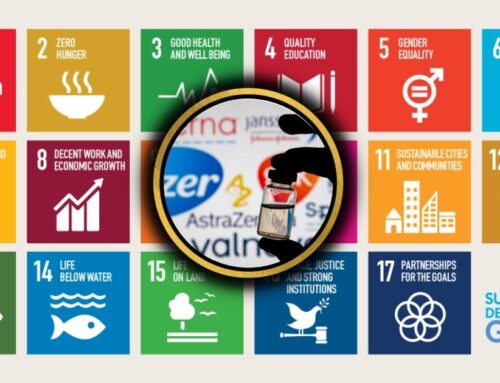Keshan Warakaulle
Today, marketers have a lot on their minds. With the rapid adoption of AI, significant changes in the search landscape, and an uncertain economy ahead, knowing how to lead your team to success seems daunting.
When I’m in these situations, I take a deep breath and go for a walk to clear my head. Once I have a steady mind, I start by asking myself questions that can help guide my marketing efforts.
Knowing the customer, assessing user preferences, and knowing what to measure drive our field. The right marketing questions can help you find these essential answers.
So, let’s dive into seven essential marketing questions to guide your marketing soul-searching this year. These are:
- How can you measure your customer experience?
- How do users perceive your company?
- Which competitor do users prefer and why?
- Why do certain pages have high bounce rates?
- How has your customer experience changed over time?
- Is the omnichannel experience consistent?
- What content performs best on social media?
- How can you measure your customer experience?
25% of marketers planned to use interviews for the first time in 2024. The HubSpot team also found that 50% used video formats on TikTok, Reels, YouTube Shorts, and more to keep up with the demand for fast, bite-sized content.
In my experience, I dabbled in a bit of everything. LinkedIn posts, social media ads, direct mail, you name it.
What’s the common thread here? Innovation.
Marketing’s job is never done. It’s about perpetual motion. We must continue to innovate every day. For instance, I dedicate an hour of my day (Monday to Friday) to brainstorming. Is anything working well? Is something not looking so hot?
So, while you might focus on metrics to measure your customer experience, don’t forget to pinpoint what’s resonating already. That’s what marketing is all about, at its core: connection.
If you want to understand, leverage, or optimize how you interact with customers, take a look at the touchpoints that shape the customer journey. Everything from the initial engagement to post-purchase.
This gives you feedback that includes surveys, social media listening, and interactions. You get a better idea of what your customers like and dislike.
It’s this collection of data and constant tinkering that’ll help you measure the customer experience.
It’s all about improving over and over, so don’t be afraid to adjust your strategy, take advantage of insights, and match your marketing to your audience.
Here are a few things to track that might help you reveal patterns, sentiments, and preferences so you can better understand the areas that need some improvement:
- Net Promoter Score (NPS).
- Customer Satisfaction Score (CSAT).
- Customer Effort Score (CES).
- Customer Lifetime Value (CLV).
- Churn rate.
- Retention rate.
- Support ticket trends.
Tracking and innovating will help you match your marketing efforts with customer expectations and get results.
- How do users perceive your company?
Over one in five Gen Zers and almost 25% of Millennials have contacted a brand on social media. It could be a persistent problem or a general question, but either way, they used social media to get in touch.
In my experience, customers and prospects alike contact me via Facebook, LinkedIn, and even Instagram sometimes. It’s a new age. It used to be all in person, via email, or on video calls.
While this is just a sign of the times we live in (and a smart use of convenient technology), it’s also created a new issue for marketers.
Social media managers now have to route customer service questions to the right people—and if they don’t, it reflects poorly on the brand overall.
Nothing screams ‘incompetent and disorganized’ like painful customer service rerouting.
Ignoring online marketing is like opening a business but not telling anyone. It shows how important it is to have a cohesive online presence.
Thanks to data-driven insights, we can understand ‘user perception’. An online review, social media mention, and sentiment analysis are all good ways to gauge where a brand stands with users. It’s a good way to know what users think.
As a marketing and brand advocate, you should be able to take products and services and match them to what’s happening in pop culture. A brand’s story should align with cultural currents to ensure resonance and relevance.
Creating a brand narrative goes beyond selling. Connecting with users authentically goes beyond transactions. Understanding user perception requires a balance of visual appeal, online presence, and cultural trends.
Companies can easily do that with the help of data insights and marketing wisdom.
Data analytics, customer feedback, and surveys help with customer perception. Even something as simple as changing out your products and services to stay relevant can help build long-term customer relationships.
Pro tip: Focus on your customer feedback, have your brand narrative align with what’s trending, and always leverage your insights to build genuine and lasting relationships.
Best for: Marketers looking to develop genuine relationships with their audiences and improve brand perception.
Outline your company’s marketing strategy in one simple, coherent plan.
- Pre-Sectioned Template
- Completely Customizable
- Example Prompts
- Professionally Designed
- Which competitor do users prefer and why?
It’s no secret: businesses that keep up with the latest marketing trends and tech innovations seem to do better than their competitors. It shows a willingness to learn, adjust, and stay relevant.
The issue is that while 90% plan on using short-term video to increase or maintain their investment, another 56% plan to increase their investment in TikTok.
That might not seem like an issue at first glance, but where’s the human element?
When I am asked which competitor users prefer and why, my response is that it’s not what you sell that matters as much as how you sell it!
“Many companies have forgotten they sell to actual people. Humans care about the entire experience, not just the marketing, sales, or service. To really win in the modern age, you must solve for humans.”
So, it’s not enough to tap into the latest and greatest trend. Using the right channels only gets you so far. At the end of the day, you have to have a seamless, engaging sales approach.
There are a lot of factors that make up customer experience. After all, making customers happy should be your priority.
Positive experiences are more important than products. Making the sales process easier, communicating clearly and transparently, and understanding your customers’ needs and preferences are all important.
Being innovative helps, but it also helps businesses stay adaptable. If they can adapt to ever-changing consumer expectations, they’ll be around for a long, long time.
“Ignoring online marketing is like opening a business but not telling anyone”. This emphasizes the importance of leveraging digital channels to engage with audiences, be visible, and stay relevant.
Businesses can focus on the product and the entire user experience with these insights and advice from industry leaders.
Prioritizing innovation, understanding the human element, and embracing digital visibility can help businesses shape and influence user preferences.
- Why do certain pages have high bounce rates?
22% of social media marketers report that creating engaging content is their biggest challenge. Likewise, another 22% say gaining and keeping followers is their pain point.
For me personally, it’s gaining and keeping followers. On one hand, you can gauge what customers want to see and hear from you online, but on the other, the numbers often contradict that.
However you slice it, the real issue is the bounce rate. They represent the percentage of visitors who leave after viewing one page. For online businesses, this presents a serious challenge.
Recent data analysis shows that bounce rates are affected by several factors. Let’s take a few at the two most common ones.
Factors Influencing Bounce Rates
- Integrated marketing strategies. Integrated marketing offers opportunities to break through to consumers in new markets. This insight emphasizes the effectiveness of cohesive marketing strategies in reaching diverse consumer segments.
- Subtle marketing approach: The best marketing doesn’t feel like marketing. This perspective advocates for a nuanced and less intrusive marketing approach, focusing on creating content that seamlessly integrates with the user experience.
This is something I’ve noticed on my end. The pushier the message, the worse the conversions. People love buying things but don’t like feeling like they’re being forced or bullied into it.
Instead, they value genuine messaging that focuses on what they stand to gain, both now and later.
How to address high bounce rates
High bounce rates require a comprehensive strategy. To continue winning the internet marketing game, your content has to be more than just brilliant — it has to give the people consuming that content the ability to become a better version of themselves.”
The best content has transformative power when it’s informative and helps people grow.
Practical steps for reducing bounce rates
Addressing high bounce rates requires a fusion of quantitative data analysis and strategic marketing insights. These perspectives collectively underscore the significance of:
- 1. Aligning marketing endeavours with cultural trends.
Staying attuned to current cultural trends and consumer preferences is crucial. The best way to capture audience interest and reduce bounce rates is to analyze and incorporate popular topics in your marketing content.
- Integrating strategies across diverse marketing channels.
A cohesive approach across various marketing channels ensures a unified brand experience. By keeping things consistent, you build trust and encourage visitors to look around.
- Creating content that resonates with your audience.
Making relevant content means understanding your audience’s needs and pain points. Personalizing the user experience can lead to longer page visits and decreased bounce rates.
- How has your customer experience changed over time?
If there’s anything marketers understand, it’s how customer demands and expectations change on a dime. Remember NFTs?
One in three planned to stop using them last year, and 29% planned to cut out the metaverse and audio chat rooms.
But these areas were once hot—and the buzz around them had people thinking they were here to stay.
It’s not just trends, though. Something else that has changed is the level of personalization that goes into the customer experience.
Customer engagement starts at the beginning of the customer journey, so businesses have to figure out what they want.
In the beginning stages, I focus on engaging with people. I show genuine interest, start conversations, and, most importantly, listen.
Once I know exactly what they’re struggling with, I talk about the key points of the offer that help resolve their specific problem.
For existing customers, it’s different. I focus on their overall satisfaction, make adjustments based on their preferences and needs, and see which other areas I can help with.
Data trends have helped us understand personalized interactions better, as they helped us reevaluate outreach methods and create content tailored to individual interests and needs.
“Don’t push people. Meet them where they are,”
This emphasizing the importance of aligning strategies with customers’ current journeys.
Customers should be met on their terms instead of being dictated to.
“People will ignore or skip anything they don’t like. So, brands have to start making things they love.”
Taking this insight to heart has helped us create better content. Brands should create content that genuinely connects with people, building meaningful connections and reducing the chance of being overlooked.
Experts always stress how important it is to engage and connect authentically. To stay on top of this changing landscape, we‘re going to evolve with them. It’s our goal to not just meet but to exceed expectations.
- Is the omnichannel experience consistent?
Blogs, social media shopping tools, and influencer marketing still held the number one highest ROI spot of any marketing channel. Things like podcasts, virtual events, SMS marketing, SEO, and direct mail did well.
So, it’s no wonder that being everywhere possible seems to be, well, smart. But just how hard is it to keep track of everything?
The constant vigilance and adaptability to meet consumer behavior changes? Staying dynamic and responsive?
I would advise marketing teams to, “take a risk and keep testing, because what works today won’t work tomorrow, but what worked yesterday may work again. We just need to keep improving”.
Customer behaviour is always changing because that’s just how humans work. Experimentation and adapting are part of the deal.
Of course, that means there is a silver lining: what worked before might start working again, so be flexible and keep that chin up.
“Good marketing makes the company look smart. Great marketing makes the customer feel smart.”
We should have that mission to empower our customers and create memorable experiences that reflect our brand.
An omnichannel approach is not a goal but a journey. Consistency needs a balance of taking risks, continuous testing, and getting a grip on what’s popular with your audience.
It also means being open to changing preferences tomorrow. It’s not just about looking smart but making our customers feel smart.
- What content performs best on social media?
Odds are you can guess what kind of content performs the best. It’s engaging, it offers a chance to inject some personality, and it’s designed to keep people invested until the end, if all goes well.
Any guesses?
If you said video, you’re right. It was the most popular and effective media format for the fourth year in a row in 2023. 50% of marketers leveraged it as the cornerstone of their marketing strategy.
It makes sense—it takes both creativity and strategy, which helps when you’re trying to go beyond your standard engagement metrics, creating a community and authentic conversations.
“Social media marketing is about creating content that brings your audience together as a community and inspires authentic conversations while increasing your brand’s awareness.”
This perspective forms the cornerstone of our social media strategy. At our core, we strive to do more than just grab your attention. Active engagement and conversation foster a strong sense of community.
You don’t just want to broadcast a message. You want real connections.
“Nothing sticks in your head better than a story. Stories can express the most complicated ideas in the most digestible ways.”
In other words, a really solid story has a massive impact. Anecdotes, testimonials, or more elaborate storytelling formats are powerful. It’s easier to understand complex messages with them, especially with social media scrolling constantly.
Empowering Tomorrow: Final Insights for Marketing Success
Marketing in 2024 is exciting. You‘ve got challenges, like always, but you’ve also got some pretty cool opportunities.
So, while these seven key questions might be food for thought on paper, they can also help you and your marketing team better tackle the year’s hurdles. It’s all down to how you see it.
Each one of these questions gives you a key to the door that can help you improve your customer experiences, have better social media storytelling, or even just a deeper understanding that leaves trends in the dust.
After all, you are only successful in marketing if you spark that human connection. This means every insightful data you have is a step closer to an authentic conversation. So, will you use that information to prioritize heartfelt interaction?

























